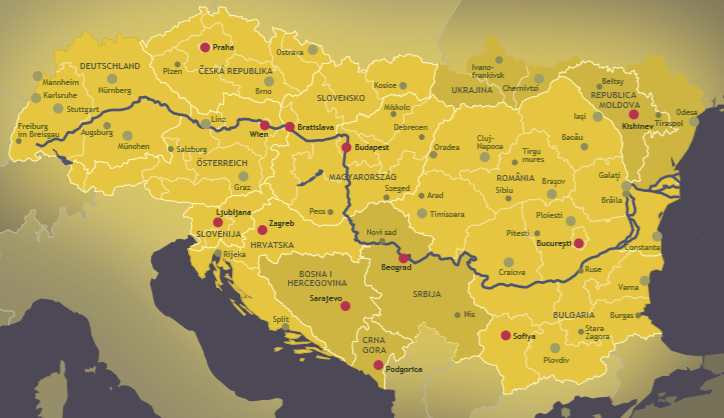EU Strategy for the Danube Region
NEWS
The area covered by the EUSDR is mainly the basin of the 2.857 km long Danube River, including also the parts of the mountain ranges where its tributaries originate (like the Alps, or the Carpathians). It stretches from the Black Forest (Germany) to the Black Sea (Romania-Moldova-Ukraine) and is home to around 115 million inhabitants. Involving 14 countries, it is the largest and most diverse macro-regional strategy: nine EU Member States (Austria, Bulgaria, Croatia, Czechia, parts of Germany, Hungary, Romania, Slovakia, Slovenia), three Accession Countries (Bosnia and Herzegovina, Montenegro, Serbia) and Ukraine & Moldova.

The Danube Strategy was formally created on 13 April 2011 when the EU Council endorsed the Communication and the accompanying Action Plan on the EUSDR at the General Affairs Council (Council Conclusions). The Action Plan was completely revised in 2019-2020.
For news and information on the activities of the Strategy, please visit the EUSDR's dedicated website www.danube-region.eu and explore the interactive video.
The Danube region, one of the largest macro-region is facing several challenges:
- environmental threats (water pollution, floods, climate change)
- untapped shipping potential and lack of modern road and rail transport connections
- insufficient energy connections
- uneven socio-economic development
- uncoordinated education, research and innovation systems
- shortcomings in safety and security
Better coordination and cooperation between the countries and regions is needed to address these challenges.
The people living in the Danube Region will benefit from:
- faster transport by road and rail
- cleaner transport by improving the navigability of rivers
- cheaper and more secure energy thanks to better connections and alternative sources
- a better environment with cleaner water, protected biodiversity, and cross-border flood prevention
- a prosperous region, through working together on the economy, education, social inclusion, and research and innovation
- attractive tourist and cultural destinations,developed and marketed jointly
- a safer, well-governed region, thanks to better cooperation and coordination of government and non-governmental organisations
The EUSDR has identified 12 priority areas, which will focus on improving:
- transport connections
- energy connections
- the environment
- socio-economic development
- security
The Strategy does not come with extra EU finance but it is supported from the resources already available
according to an integrated approach. Countries may also make use of the funding they receive through EU cohesion policy, other EU
programmes and financial instruments, and various international financial institutions.
To know more about financial opportunities visit www.danube-region.eu/pages/funding-opportunities
- Since 2007, the majority of the countries in the Danube region are EU countries.
- Many of the problems are covered by EU policy.
- As an independent player with respected authority, the EU is in a good position to facilitate cooperation.
- The EU already runs programmes in the region and so can provide opportunities for cooperation.
To get in contact with the EUSDR team in DG REGIO, please email the secretary of the REGIO. DDG.D1: REGIO-TRANSNATIONAL-AND-INTERREGIONAL-COOPERATION@ec.europa.eu

